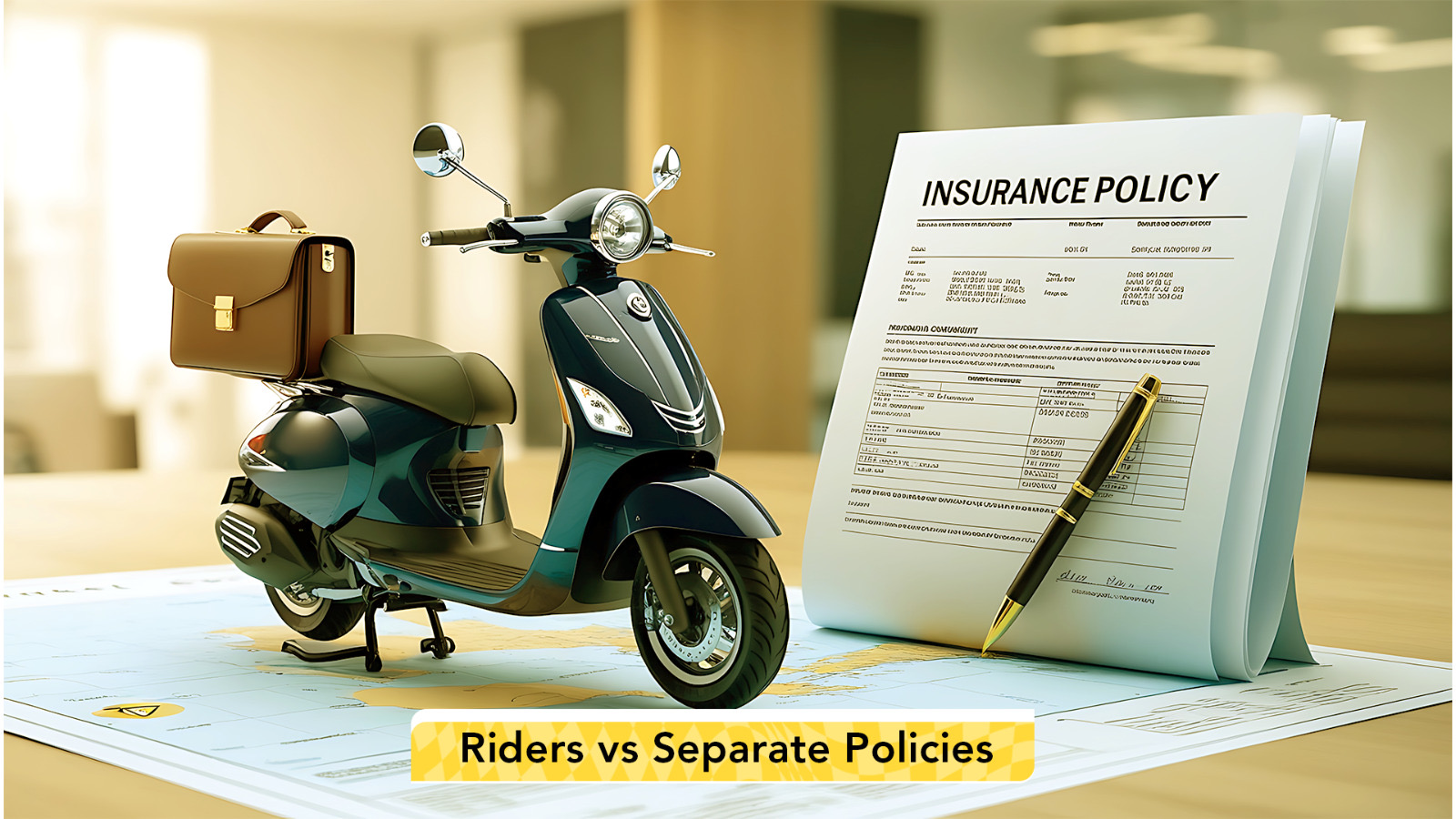Ever found yourself scratching your head over the difference between a term plan and a regular life insurance policy? You’re not alone! In the world of insurance, these terms can be confusing. Many people in India hear “life insurance” and think of policies that not only provide protection but also give some money back. On the other hand, term insurance is often talked about as a pure protection plan. In this blog, we’ll break down term insurance vs. life insurance in simple terms. Let’s dive into the key differences, so you can make better insurance decisions for yourself and your family.
What Is Life Insurance and How Does It Differ from Term Insurance?
Life insurance is a broad category. It includes both term insurance (pure protection for a specific period) and investment-linked policies (like whole life or endowment plans) that provide financial protection and savings benefits.
Term Insurance: Pure Protection Plan
Term insurance is the most basic form of life insurance. It offers a death benefit (a payout to your family if you pass away during the policy period), but nothing is paid out if you survive the term. It’s a pure risk cover that protects your loved ones financially, but doesn’t have a savings or investment component.
For example, if you buy a ₹50 lakh term plan for 20 years, your family gets ₹50 lakh if you die during those 20 years. But if you outlive the term, your coverage ends, and no money is returned.
Pros: It’s affordable and provides high coverage for a low premium. It’s ideal for income protection during the years your family depends on you financially.
Life Insurance with Savings: Combining Protection and Investment
On the other hand, life insurance policies with savings components (like endowment, whole life, or ULIPs) give you both financial protection and a savings benefit. If you survive the policy term, these plans provide a maturity payout, which can include the sum assured plus bonuses or returns from investments. These policies guarantee returns but usually at a higher premium compared to term insurance.
For example, with an endowment plan, you might pay ₹40,000 annually for 20 years, and if you live through it, you receive the sum assured plus additional bonuses. These plans help build wealth over time while still providing life cover.
Pros: Ideal for people who want to build savings while having life protection. You get the security of life cover and also a financial return at the end.
Why Term Insurance Is More Affordable Than Life Insurance with Savings
Term insurance has significantly lower premiums for the same amount of coverage compared to life insurance with savings. Why? Because with term insurance, you’re only paying for the death benefit—no additional funds are being invested or saved for you.
In comparison, Life insurance with savings involves both a death benefit and an investment component. Since the insurer is also responsible for managing your funds and giving returns, the premiums are higher.
For example, if you’re 27 years old, a ₹1 crore term policy might cost you only ₹10,000 to ₹20,000 annually. But a whole life or endowment policy offering the same ₹1 crore cover would likely cost you at least ₹50,000 or more per year, depending on the policy’s features and duration.
Pro Tip: If your goal is high coverage for affordable premiums, term insurance is your best bet. If you want to combine wealth building with life protection, then life insurance with savings might be worth considering, but remember you have to pay more.
When to Choose Term Insurance
Term insurance is perfect for people looking for family safety cover. If you’re the sole breadwinner in your family, Term insurance ensures that your family is financially protected if you’re no longer around. It’s an affordable way to ensure that your loved ones can cover expenses like home loans, education, and daily living costs.
For example, Ravi, a 35-year-old with two kids, buys a ₹1 crore term insurance plan. In case of his untimely death, his family would get the ₹1 crore to maintain their lifestyle and take care of expenses without struggling financially.
The goal of term insurance is straightforward: protecting your family financially if you’re not there to provide for them.
When to Choose Life Insurance
Life insurance policies with savings components are designed for people who want to build wealth while also protecting their families. These policies combine insurance and investment, allowing you to save for future goals (like retirement, children’s education) while keeping life coverage intact.
For example, Akshita, a 40-year-old, buys an endowment policy that matures in 20 years. If she survives, she gets the sum assured plus any bonuses or additional returns. If she passes away, her beneficiaries will receive the sum assured.
Pro Tip: Wealth creation can be done outside of insurance policies through other investment options (mutual funds, PPF, etc.). If you’re primarily looking for savings growth with life cover, a traditional life insurance plan with savings might suit your needs, but always compare the returns with other investment options first.
Differences in Claim Process, Riders, and Policy Duration
Here’s what you need to know about claims, riders, and policy durations for both types of insurance:
- Claims:
- Term insurance: Death claims only. If the insured person passes away during the term, the nominee receives the payout. If they survive the term, no payout is made.
- Life insurance: Pays both death claims and maturity claims (if the person survives). Some policies also offer survival benefits throughout the term, such as money-back plans.
- Term insurance: Death claims only. If the insured person passes away during the term, the nominee receives the payout. If they survive the term, no payout is made.
- Riders (Add-ons):
- Both term and life insurance with savings allow you to add riders for extra coverage (like critical illness or accidental death).
- For term plans, riders are commonly used to provide extra protection (e.g., critical illness cover), whereas traditional plans might include built-in riders, such as guaranteed additions or bonuses.
- Both term and life insurance with savings allow you to add riders for extra coverage (like critical illness or accidental death).
- Policy Duration:
- Term insurance usually provides coverage up to a specific age (e.g., 60, 70years). After the term, the policy ends, and no benefits are paid if you survive.
- Life insurance with savings can be both short-term (e.g., 15 or 20 years) and long-term (e.g., whole life), depending on the plan. The duration depends on your goals – whether you want lifelong coverage or a fixed-term payout.
- Term insurance usually provides coverage up to a specific age (e.g., 60, 70years). After the term, the policy ends, and no benefits are paid if you survive.
Final Thoughts: Make the Right Choice for Your Needs
At the end of the day, the choice between term insurance and life insurance comes down to your personal goals. If your goal is purely financial protection for your family is your priority, and you’re looking for low-cost coverage, term insurance is the way to go. On the other hand, if you’re also looking to build savings or secure a guaranteed return while ensuring your family is protected, life insurance might be a better fit.





